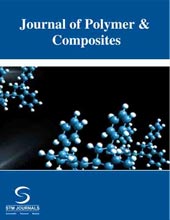[{“box”:0,”content”:”
n
n
- n t

n
Katneni Prasanthi
[/foreach]
n
n
n
- [foreach 286] [if 1175 not_equal=””]n t
- Assistant Professor, Department of Civil Engineering, Prasad V Potluri Siddhartha Institute of Technology, Andhra Pradesh, India
n[/if 1175][/foreach]
n
Abstract
nDue to its flexibility at young ages and its capacity to be moulded into any necessary structural form and shape, concrete is the most commonly used construction material. For concrete to be workable and to have the necessary strength and durability, thorough compaction utilising vibration is typically necessary. Large numbers of voids are caused by inadequate concrete compaction affecting the structural strength and long-term toughness. Self-Compacting Concrete (SCC) offers a remedy for these issues. As its name suggests, it may compress itself without the need for additional vibration or compactive force. The lack of standardised mix design procedures and testing techniques has, however, limited the scope of applications for self-compacting concrete. Because there is no need for vibration and noise pollution, self-compacting concrete is becoming more and more popular. Using Ordinary Portland Cement, Palm Oil Fuel Ash as a mineral additive, and Polycarboxylate Ether as a super plasticizer, the study investigates the performance of self-compacting composite concrete. Palm oil fuel ash is substituted for cement in varying amounts (0%, 5%, 10%, 15%, 20%, and 25%). The results of the slump flow test, V-funnel test, and L-Box test for the acceptance characteristics of selfcompacting concrete are provided. For M30 grade concrete, compressive strength at 7 and 28 days of age is also calculated. This document also includes the test findings that were collected.
n
Keywords: Self-Compacting composite Concrete, Ordinary Portland Cement, Palm Oil Fuel Ash, Poly carboxylate ether.
n[if 424 equals=”Regular Issue”][This article belongs to Journal of Polymer and Composites(jopc)]
n
n

n
n
n
nn
nn
Full Text
n[if 992 equals=”Open Access”] https://storage.googleapis.com/journals-stmjournals-com-wp-media-to-gcp-offload/2023/08/e2cea09b-s76-s86-a-study-of-composite-concrete-using-palm-oil-fuel-ash-pofa.pdf[else] nvar fieldValue = “[user_role]”;nif (fieldValue == ‘indexingbodies’) {n document.write(‘https://storage.googleapis.com/journals-stmjournals-com-wp-media-to-gcp-offload/2023/08/e2cea09b-s76-s86-a-study-of-composite-concrete-using-palm-oil-fuel-ash-pofa.pdf’);n }nelse if (fieldValue == ‘administrator’) { document.write(‘https://storage.googleapis.com/journals-stmjournals-com-wp-media-to-gcp-offload/2023/08/e2cea09b-s76-s86-a-study-of-composite-concrete-using-palm-oil-fuel-ash-pofa.pdf’); }nelse if (fieldValue == ‘jopc’) { document.write(‘https://storage.googleapis.com/journals-stmjournals-com-wp-media-to-gcp-offload/2023/08/e2cea09b-s76-s86-a-study-of-composite-concrete-using-palm-oil-fuel-ash-pofa.pdf’); }n else { document.write(‘ ‘); }n [/if 992] [if 379 not_equal=””]n
Browse Figures
n
n
n[/if 379]n
References
n[if 1104 equals=””]n
1. Belal Alsubari, Payam Shafigh, Mohd Zamin Jumaat, U. Johnson Alengaram “Palm Oil Fuel Ash as a Partial Cement Replacement for Producing Durable Self-consolidating High-Strength Concrete” DOI 10.1007/s13369-014-1381-3. Arabian Journal for Science and Engineering volume 39, pages8507–8516 (2014).
2. Hussein M Hamada1, Gul Ahmed Jokhio, Fadzil Mat Yahaya1 and Ali M Humada “Properties of fresh and hardened sustainable concrete due to the use of palm oil fuel ash as cement replacement” April 2018 IOP Conference Series Materials Science and Engineering 342(1):012035
3. Jegathish Kanadasan and Hashim Abdul Razak “Utilization of Palm Oil Clinker as Cement Replacement Material December 2015 Materials 8(12):8817–8838Ms.
4. R. Subashini1, Mrs. J. Umanambi “Experimental Study on Self Compacting Concrete by Partial Replacement of Cement with Palm Oil Fuel Ash” Volume: 06 Issue: 04 | Apr 2019 O.M. Ofuyatan S.O. Edeki “Dataset on the durability behavior of palm oil fuel ash self-compacting concrete” Data in Brief Volume 19, August 2018, Pages 853–858
5. Abdul Munira, Abdullahb, Huzaimb, Sofyana, Irfandia, Safwana “Utilization of Palm Oil Fuel Ash (POFA) in Producing Lightweight Foamed Concrete for Non-structural Building Material” Procedia Engineering Volume 125, 2015, Pages 739–746
6. Munir A Abdullah Huzaim “Utilization of palm oil fuel ash (POFA) in producing lightweight foamed concrete for non-structural building material” Procedia Engineering (2015) 125 739–746.
7. Mohammad Hosseini, A S M Abdul Awal and Abdul Haq Ehsan “Influence of palm oil fuel ash on fresh and mechanical properties of self-compacting concrete” Sadhan a Vol. 40, Part 6, September 2015, pp. 1989–1999.
8. Belal Alsubari, Payam Shafigh “The Effect of Palm Oil Fuel Ash as a Cement replacement Material on Self-Compacting Concrete” Applied Mechanics and Materials 567:529–534.
9. EFNARC, S.: Guidelines for self-compacting concrete. February2002. (2002).
10. Tangchirapat, W.; Saeting, T.; Jaturapitakkul, C.; Kiattikomol, K.; Siripanichgorn, A “Use of waste ash from palm oil industry in concrete”. Waste Manag. 27(1), 81–88 (2007).
nn[/if 1104][if 1104 not_equal=””]n
- [foreach 1102]n t
- [if 1106 equals=””], [/if 1106][if 1106 not_equal=””],[/if 1106]
n[/foreach]
n[/if 1104]
nn
nn[if 1114 equals=”Yes”]n
n[/if 1114]
n
n
n
| Volume | 11 |
| Issue | 01 |
| Received | December 21, 2022 |
| Accepted | May 10, 2023 |
| Published | June 19, 2023 |
n
n
n
n
n[/foreach]
n[/if 1190] [if 1177 not_equal=””]n
n
n[/foreach]
n[/if 1177]
n
n
n
n function myFunction2() {n var x = document.getElementById(“browsefigure”);n if (x.style.display === “block”) {n x.style.display = “none”;n }n else { x.style.display = “Block”; }n }n document.querySelector(“.prevBtn”).addEventListener(“click”, () => {n changeSlides(-1);n });n document.querySelector(“.nextBtn”).addEventListener(“click”, () => {n changeSlides(1);n });n var slideIndex = 1;n showSlides(slideIndex);n function changeSlides(n) {n showSlides((slideIndex += n));n }n function currentSlide(n) {n showSlides((slideIndex = n));n }n function showSlides(n) {n var i;n var slides = document.getElementsByClassName(“Slide”);n var dots = document.getElementsByClassName(“Navdot”);n if (n > slides.length) { slideIndex = 1; }n if (n (item.style.display = “none”));n Array.from(dots).forEach(n item => (item.className = item.className.replace(” selected”, “”))n );n slides[slideIndex – 1].style.display = “block”;n dots[slideIndex – 1].className += ” selected”;n }n n function myfun() {n x = document.getElementById(“editor”);n y = document.getElementById(“down”);n z = document.getElementById(“up”);n if (x.style.display == “none”) {n x.style.display = “block”;n }n else {n x.style.display = “none”;n }n if (y.style.display == “none”) {n y.style.display = “block”;n }n else {n y.style.display = “none”;n }n if (z.style.display == “none”) {n z.style.display = “block”;n }n else {n z.style.display = “none”;n }n }n function myfun2() {n x = document.getElementById(“reviewer”);n y = document.getElementById(“down2”);n z = document.getElementById(“up2”);n if (x.style.display == “none”) {n x.style.display = “block”;n }n else {n x.style.display = “none”;n }n if (y.style.display == “none”) {n y.style.display = “block”;n }n else {n y.style.display = “none”;n }n if (z.style.display == “none”) {n z.style.display = “block”;n }n else {n z.style.display = “none”;n }n }n”}]










